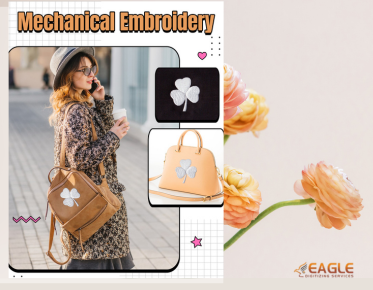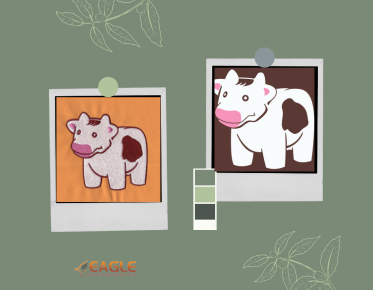Understanding Digitized Embroidery Pricing Structures: What Influences Cost?
When it comes to digitized embroidery, pricing is not a
one-size-fits-all proposition. Various factors converge to influence the final
cost, creating a complex tapestry of considerations. Generally, prices are
determined based on the intricacy of the design, the number of stitches
involved, and the type of fabric selected. Additionally, the pricing structure
may vary among providers, reflecting their individual overhead costs, skill
levels, and market positioning. Understanding these dynamics is essential for
anyone venturing into the world of embroidered goods.
The Key Components of Pricing Structures
Embroidery
pricing typically consists of several components, each playing a pivotal role
in determining the final amount. The main elements include:
- Design Complexity: The more
intricate the design, the more labor and time required to execute it,
resulting in higher costs.
- Stitch Count: Pricing
often correlates directly with the total number of stitches; a higher
stitch count usually equates to a higher price.
- Setup Fees: These
initial charges cover the preparation needed to digitize and prepare an embroidery design, ensuring a smooth production
process.
- Material Costs: The choice
of fabric and thread can significantly impact overall pricing. Specialty
materials may come at a premium.
- Customization:
Personalized touches or unique modifications to standard designs often add
to the cost.
By grasping these
components, customers can better navigate their options and make informed
decisions.
Factors Influencing Pricing in Digitized Embroidery
Design
Complexity: Simplicity vs. Intricacy
The complexity of
a design plays a crucial role in determining embroidery costs. Simple designs,
often composed of basic shapes and fewer colors, are generally more affordable.
In contrast, intricate patterns, which may include fine details and elaborate
color schemes, require more time and expertise, leading to higher prices.
Moreover, the
technical skill required to digitize a complex design
also contributes to the cost. Providers with advanced expertise may charge more
for intricate work, but this investment often results in higher-quality
embroidery that stands out.
Stitch
Count: What You Need to Know
Stitch count is a
fundamental aspect of embroidery pricing. Each stitch represents labor, time,
and material usage, which all factor into the overall cost. Many embroidery
services use a per-stitch pricing model, making it essential to know your
design’s stitch count.
For example, a
design with 10,000 stitches will typically cost more than one with 5,000
stitches. This metric encourages careful consideration of design
choices—sometimes, less is more, especially when aiming to keep costs in check.
Color
Choices: The Impact of Multi-Color Designs
Color choices can
substantially influence embroidery pricing. While a single-color design may be
economical, multi-color designs require additional thread changes, color
separations, and often more meticulous planning during the digitization
process. Each color adds complexity and time, which can escalate costs.
For businesses or
individuals looking to create a vibrant, multi-colored design, it’s crucial to
weigh the aesthetic benefits against the potential increase in expenses.
Fabric Selection and Its Cost Implications
Choosing
the Right Fabric: Budget vs. Quality
Fabric selection
is pivotal in the embroidery process and directly impacts pricing.
Budget-friendly fabrics like cotton are widely used and can help keep costs
down. However, opting for higher-quality materials may enhance the overall look
and feel of the embroidered piece, contributing to its longevity.
Investing in
quality fabric can elevate the final product, making it more appealing to
customers or recipients. When deciding, consider both your budget and the
intended use of the embroidered item.
Specialty
Fabrics: Are They Worth the Extra Cost?
Specialty
fabrics, such as silk or performance textiles, often come with a heftier price
tag. While these materials can significantly enhance the visual appeal and
functionality of embroidered products, it’s essential to evaluate whether the
additional cost aligns with your goals.
For example, silk
can add a luxurious touch to a design, but its higher price may not justify its
use for a promotional item. Understanding your project’s objectives can help
determine whether the investment in specialty fabrics is worthwhile.
The
Relationship Between Fabric and Stitch Quality
The fabric chosen
for embroidery directly affects the quality of the final stitches. Some fabrics
are more forgiving than others, allowing for cleaner lines and better overall
results.
For instance,
tightly woven fabrics often yield more precise stitching, while looser weaves
might result in uneven or puckered designs. Being mindful of this relationship
can help you select fabrics that complement your design and enhance the
embroidery’s quality.
Understanding Setup Fees
What
Are Setup Fees?
Setup fees are
charges that cover the preparation needed to digitize and prepare an embroidery
design. These fees account for the time spent creating a digital file that
instructs the embroidery machine on how to execute the design.
While some might
view these fees as an inconvenience, they are crucial for ensuring a seamless
production process and high-quality outcomes.
How
Setup Fees Are Calculated
Setup fees are
typically calculated based on the complexity of the design and the time
required for digitization. A simple logo may incur a lower setup fee than an
intricate, multi-layered design that demands more technical work.
Understanding how
these fees are determined allows for clearer expectations when requesting
embroidery services.
When
Are Setup Fees Waived?
In some cases,
setup fees may be waived, particularly for large orders or repeat customers. If
you’re ordering a design that has already been digitized, many providers will
forgo the fee, allowing you to save money. Always inquire about potential
waivers when discussing your project to maximize your budget.
Production Costs: What’s Included?
Labor
Costs: The Value of Skilled Work
Labor costs
represent a significant portion of embroidery pricing. Skilled artisans bring
expertise and craftsmanship to the process, ensuring that every stitch is
executed with precision. While it may be tempting to seek the lowest price, the
quality of workmanship can vary widely among providers.
Investing in
skilled labor often results in superior embroidery that meets or exceeds
expectations.
Machine
Time: How It Influences Pricing
Machine time also
factors into production costs. The amount of time the embroidery machine runs
to complete your design directly impacts pricing. More intricate designs or
larger orders will require more machine time, which translates to higher costs.
When placing an
order, consider the machine time required for your specific project, as this
can help set realistic budget expectations.
Rush
Orders: The Premium for Speed
In an
increasingly fast-paced world, rush orders have become common in the embroidery
business. However, opting for a rush service often comes with a premium price.
Providers typically charge extra for expedited processing to accommodate the
shortened timeline.
If you’re working
with tight deadlines, be prepared to allocate additional funds to ensure timely
delivery.
The Role of Customization
Personalization
Options: Adding Unique Touches
Customization is
a powerful way to differentiate embroidered products, making them more
appealing to customers. Personalization options, such as names or unique
designs, can significantly enhance the value of an item.
However, these
personalized touches often come with an added cost. It’s essential to consider
whether the benefits of customization align with your goals and budget.
Custom
Logos vs. Stock Designs: Pricing Differences
Choosing between
custom logos and stock designs can influence pricing structures. Custom logos,
crafted specifically for a brand or individual, typically incur higher costs
due to the design and digitization work involved. In contrast, stock designs
are pre-made and can be a more economical option.
Weighing the
benefits of unique branding against budget constraints can help determine the
best path forward.
The
Cost of Modifications: Small Changes, Big Impact
Even minor
modifications to existing designs can affect costs. Adjustments, such as
changing thread colors or adding small details, often require additional setup
time and may incur extra charges. When planning modifications, it’s wise to
assess how these changes fit into your overall budget.
Minimum Order Quantities
What
Are Minimum Order Requirements?
Many embroidery
providers have minimum order requirements, which dictate the smallest number of
items you can order for embroidery services. These requirements are often set
to ensure efficiency and justify the setup and production costs involved.
Understanding
these minimums can help you plan your orders effectively, whether you’re
purchasing for personal use or business needs.
How
Ordering in Bulk Can Save Money
Ordering in bulk
often results in cost savings, as many providers offer discounts for larger
quantities. This can significantly lower the price per item, making it an
appealing option for businesses or organizations looking to outfit a team or
group.
When considering
bulk orders, ensure you’re prepared to manage the larger quantities to maximize
your savings.
The
Trade-Offs of Smaller Orders
While smaller
orders may be more manageable, they often come with higher per-unit costs.
Additionally, some providers may impose setup fees even for small quantities,
which can erode potential savings. It’s essential to balance the desire for
fewer items with the associated costs to make informed purchasing decisions.
Hidden Costs to Watch For
Common
Hidden Fees in Embroidery Pricing
Hidden fees can
catch even the savviest shoppers off guard. Common hidden charges include
additional setup fees for more complex designs, costs for thread color changes,
and charges for specialty fabrics. Being aware of these potential fees can help
you better budget for your embroidery project.
How
to Avoid Surprising Charges
To minimize the
risk of unexpected charges, it’s crucial to have open communication with your
provider. Request a detailed quote that outlines all potential costs, and
clarifies any ambiguities regarding pricing. Taking these proactive steps can
help you avoid surprises down the line.
Understanding
Pricing Transparency
Pricing
transparency is essential for establishing trust between customers and
providers. Seek out embroidery services that provide clear, upfront pricing
information, including any potential hidden fees. A reputable provider will be
willing to discuss pricing structures openly, helping you make informed
decisions.
Seasonal Trends and Their Effect on Pricing
How
Demand Fluctuates with Seasons
Embroidery
pricing can fluctuate with seasonal trends. For instance, demand often peaks
during holidays or events, leading to potential price increases. Being aware of
these fluctuations allows for better planning and budget management.
Planning
Ahead: Seasonal Promotions and Discounts
Many providers
offer seasonal promotions or discounts, making certain times of the year more
advantageous for placing orders. Planning can help you capitalize on these
opportunities and reduce overall costs, allowing you to get more value for your
investment.
Adjusting
Your Strategy Based on Market Trends
Keeping an eye on
market trends can guide your embroidery strategy. If certain styles or designs
become popular, it may be wise to adjust your offerings to align with consumer
demand. Staying attuned to these shifts can help you maintain a competitive
edge while managing costs effectively.
Ultimately, investing in quality digitized embroidery is an investment in branding and identity. A well-executed embroidery design can enhance product appeal, foster brand loyalty, and create lasting impressions. By understanding pricing structures and the value associated with quality, clients can make strategic decisions that elevate their projects and resonate with their audiences.



